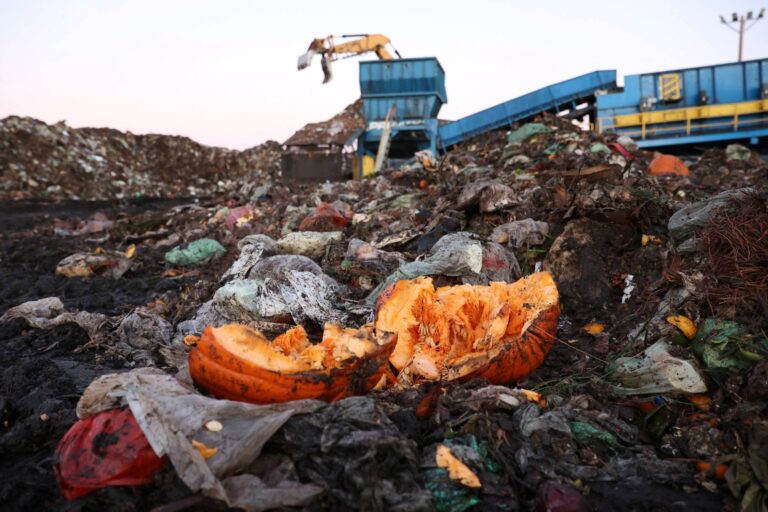Human-centric globalization: Taking G20 to the Last Mile, leaving none behind

Vasudhaiva Kutumbakam – these two words capture a deep philosophy. It means ‘the world is one family.’ This is an all-embracing outlook that encourages us to progress as one universal family, transcending borders, languages and ideologies. During India’s G20 presidency, this has translated into a call for human-centric progress. As One Earth, we are coming together to nurture our planet. As One Family, we support each other in the pursuit of growth. And we move together towards a shared future – One Future – which is an undeniable truth in these interconnected times.
The post-pandemic world order is very different from the world before it. There are three important changes, among others.
First, there is a growing realization that a shift away from a GDP-centric view of the world to a human-centric view is needed.
Second, the world is recognizing the importance of resilience and reliability in global supply chains.
Third, there is a collective call for boosting multilateralism through the reform of global institutions.
Our G20 presidency has played the role of a catalyst in these shifts.
In December 2022, when we took over the presidency from Indonesia, I had written that a mindset shift must be catalyzed by the G20. This was especially needed in the context of mainstreaming the marginalized aspirations of developing countries, the Global South and Africa.
The Voice of Global South Summit in January 2023, which witnessed participation from 125 countries, was one of the foremost initiatives under our presidency. It was an important exercise to gather inputs and ideas from the Global South. Further, our presidency has not only seen the largest-ever participation from African countries but has also pushed for the inclusion of the African Union as a permanent member of the G20.
An interconnected world means our challenges across domains are interlinked. This is the midway year of the 2030 Agenda and many are noting with great concern that the progress on SDGs is off-track. The G20 2023 Action Plan on Accelerating Progress on SDGs will spearhead the future direction of the G20 towards implementing the SDGs.
In India, living in harmony with nature has been a norm since ancient times and we have been contributing our share towards climate action even in modern times.
Many countries of the Global South are at various stages of development and climate action must be a complementary pursuit. Ambitions for climate action must be matched with actions on climate finance and transfer of technology.
We believe there is a need to move away from a purely restrictive attitude of what should not be done, to a more constructive attitude focusing on what can be done to fight climate change.
The Chennai High-Level Principles for a Sustainable and Resilient Blue Economy focus on keeping our oceans healthy.
A global ecosystem for clean and green hydrogen will emerge from our presidency, along with a Green Hydrogen Innovation Center.
In 2015, we launched the International Solar Alliance. Now, through the Global Biofuels Alliance, we will support the world to enable energy transitions in tune with the benefits of a circular economy.
Democratizing climate action is the best way to impart momentum to the movement. Just as individuals make daily decisions based on their long-term health, they can make lifestyle decisions based on the impact on the planet’s long-term health. Just like yoga became a global mass movement for wellness, we have also nudged the world with Lifestyles for Sustainable Environment (LiFE).
Due to the impact of climate change, ensuring food and nutritional security will be crucial. Millets, or Shree Anna, can help with this while also boosting climate-smart agriculture. In the International Year of Millets, we have taken millets to global palates. The Deccan High Level Principles on Food Security and Nutrition is also helpful in this direction.
Technology is transformative but it also needs to be made inclusive. In the past, the benefits of technological advancements have not benefited all sections of society equally. India, over the last few years, has shown how technology can be leveraged to narrow inequalities, rather than widen them.
For instance, the billions across the world that remain unbanked, or lack digital identities, can be financially included through digital public infrastructure (DPI). The solutions we have built using our DPI have now been recognized globally. Now, through the G20, we will help developing countries adapt, build and scale DPI to unlock the power of inclusive growth.
That India is the fastest-growing large economy is no accident. Our simple, scalable and sustainable solutions have empowered the vulnerable and the marginalized to lead our development story. From space to sports, economy to entrepreneurship, Indian women have taken the lead in various sectors. They have shifted the narrative from the development of women to women-led development. Our G20 presidency is working on bridging the gender digital divide, reducing labor force participation gaps and enabling a larger role for women in leadership and decision-making.
For India, the G20 presidency is not merely a high-level diplomatic endeavor. As the Mother of Democracy and a model of diversity, we opened the doors of this experience to the world.
Today, accomplishing things at scale is a quality that is associated with India. The G20 presidency is no exception. It has become a people-driven movement. Over 200 meetings will have been organized in 60 Indian cities across the length and breadth of our nation, hosting nearly 100,000 delegates from 125 countries by the end of our term. No presidency has ever encompassed such a vast and diverse geographical expanse.
It is one thing to hear about India’s demography, democracy, diversity and development from someone else. It is totally different to experience them first-hand. I am sure our G20 delegates would vouch for this.
Our G20 presidency strives to bridge divides, dismantle barriers and sow seeds of collaboration that nourish a world where unity prevails over discord, where shared destiny eclipses isolation. As the G20 president, we had pledged to make the global table larger, ensuring that every voice is heard and every country contributes. I am positive that we have matched our pledge with actions and outcomes.









NEW HAVEN – Now that the falsehoods and obfuscation of climate denialism have finally been silenced, addressing climate change has become the world’s top priority. But time is running out, and the International Monetary Fund warns that any further delays on implementing policies to mitigate global warming will only add to the economic cost of the transition to a low-emissions economy. Worse, we still lack a concrete, pragmatic strategy for tackling the problem. Although economists have made a robust case for why carbon taxes are the best solution, this option has proven politically infeasible, at least in those countries that account for some of the highest emissions (namely, the United States).
Commentators have also stressed that climate change is a shared problem involving important cross-border externalities that must be addressed through a multilateral approach to global coordination. But, as with carbon taxes, this argument has fallen on deaf ears. And, given the current geopolitical climate and the increasing fragmentation of the global economy, there is little hope that the message will get through anytime soon.
Having committed to assisting developing economies as they confront climate change, the World Bank finds itself limited by the country-based model underlying its financing operations. It is earnestly weighing its options and considering how it could coordinate climate-related financing across borders. But while such efforts are well meaning and consistent with the spirit of multilateralism, they inevitably will delay concrete action. World Bank financing would have to be completely restructured, and coordinating action across multiple countries that have limited financial resources and often conflicting interests seems an impossible task. For example, while some developing economies are rich in fossil fuels, others are starved for energy sources.
Given these limitations, pragmatism dictates focusing on the biggest polluters. Global carbon dioxide emissions are concentrated among only a handful of countries and regions. China, the US, the European Union, Japan, and Russia collectively account for 63% of the total, and none of these top polluters is a low-income country anymore. China, the poorest of the group, represents around 30% of all emissions, making it by far the world’s largest current polluter in absolute terms. But its government is taking steps to accelerate the transition to green energy – a winning strategy, given the country’s abundance of rare earth metals.
India, the third-largest emitter, currently accounts for approximately 7% of global CO2 emissions, and its size and growth trajectory imply that it could easily surpass China as the leading polluter, barring stronger climate policies. In fact, when it comes to helping developing countries decarbonize, considerable progress could be made simply by targeting India alone. The big advantage of this strategy is that it would avoid the paralysis associated with attempts to adopt a multilateral approach in an increasingly fragmented world.
This does not mean that we should eschew projects aimed at climate mitigation or adaptation in other countries. But we would not need to wait until everyone is on board before doing anything. Those insisting on a multilateral approach should learn from the experience of the ultimate multilateral institution: the World Trade Organization. Its requirement that every single provision in every multilateral agreement gain unanimous support has left it increasingly paralyzed, prompting demands for institutional reform.
Of course, India is not low-hanging fruit. It is rich in coal and has little incentive (beyond the health of its citizens) to hasten the transition to green energy. In focusing on India, we would need to employ the carrot, not the stick.
Since the stick generally takes the form of pressure to implement carbon taxation, it is a non-starter. A tax would be ineffective, because it would incite massive domestic opposition (as has been the case in the US). It would also be morally objectionable, because it is unfair to ask a lower-middle-income country to bear the burden of reducing CO2 emissions when rich countries (like the US) have failed to do the same. Moreover, even if China and India are now two of the world’s biggest polluters, they bear little responsibility for the past, cumulative emissions that led to the current climate crisis.
That leaves the carrot, which would come in the form of tax incentives or subsidies to support green energy. When paired with other policies, these can ease firms into adapting to higher environmental standards (such as those associated with a cap-and-trade program). But such policies are expensive, which means that tackling climate change will require richer countries to help finance them. Whether or not India becomes the new China, it is still in our power to ensure that it does not become the new outsize polluter.
https://www.project-syndicate.org/commentary/climate-change-prioritize-top-emitters-over-multilateralism-by-pinelopi-koujianou-goldberg-2023-05